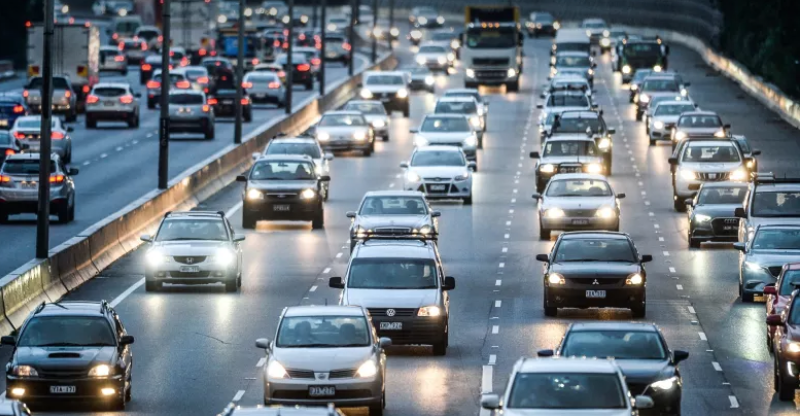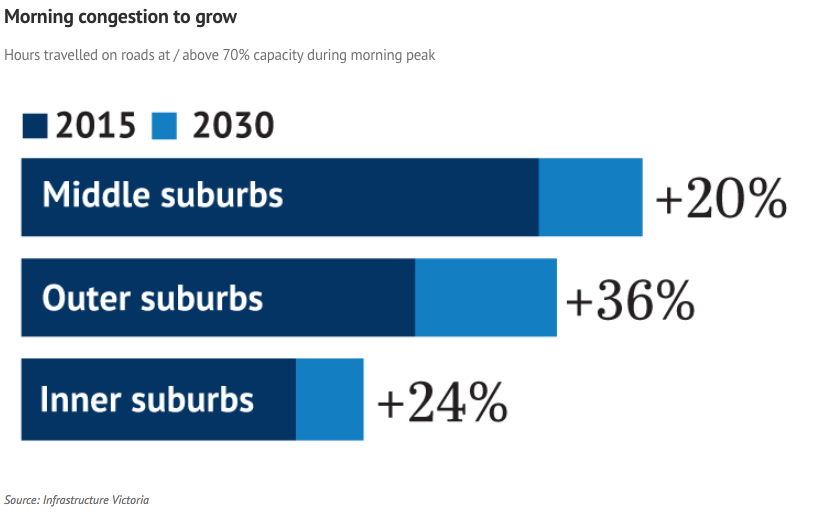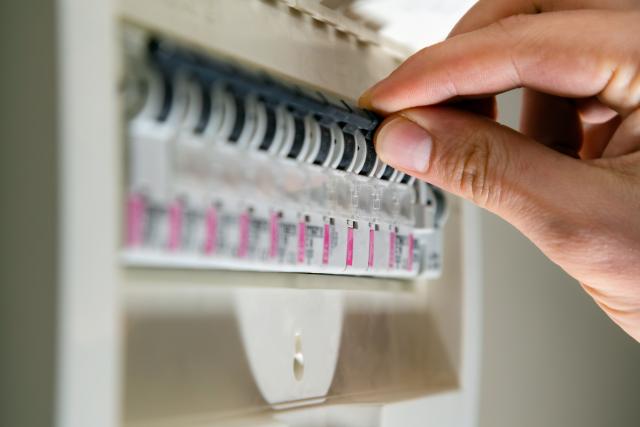By Timna Jacks
Melbourne will have an extra five hours of peak traffic by 2030 if the government does not fix the city’s congestion crisis, the state’s leading infrastructure adviser has warned.
Drivers could spend 20 per cent more time sitting in traffic as congestion significantly worsens over the next 12 years, modeling released by Infrastructure Victoria has revealed.
The evening peak period will start as early as 2.30pm and end as late as 8.30pm in Melbourne’s outer suburbs, as the daily distances that people travel grows by 25 per cent.
And while the roads will be clogged, so too will the trains on key suburban lines, despite the government spending $11 billion on the Melbourne Metro Tunnel.
A slew of low-cost solutions should be delivered over the next five years to encourage people to travel outside of peak periods and get cars off busy roads, the report recommends.
Off-peak discounted trips on trams, trains and buses should be rolled out as soon as January next year, said Infrastructure Victoria’s chief executive Michel Masson. Such a change could see an estimated 2200 off the road as people took advantage of cheaper fares.
It was now time for businesses to offer flexible working arrangements, so that workers had more freedom to travel when the network was not so busy, Mr Masson said.
“We know there are many people who don’t have a lot of flexibility about how and when they travel,” he said.“I call on my fellow CEOs and ask, do your workers really need to be at work from 9am to 5pm, when they can have alternatives?”
While the Melbourne Metro Tunnel will increase the rail network’s capacity, the adviser warns that trains running through it will be at capacity only five years after it is completed in 2025.
This will include the Cranbourne/Pakenham line in the south-east and the Sunbury line in the north-west.
Roberto Evangelio, the director of the data analysis underpinning the report, said the system was under enormous pressure, but motivating people to take the train outside of the peak would help.
“We’re still catching up,” Mr Evangelio said. “On the western side of the Melbourne Metro project, there is huge population growth – patronage is increasing by 8 or 9 per cent every year – so we’re still really catching up.”

Car parking levies should be raised as congestion worsens, the report recommended, and the levies expanded beyond the city – to Richmond, South Yarra, Windsor and Prahran.
Nearly 4000 cars – the equivalent of two freeway lanes – were estimated to have been removed from the road between 2015 and 2017 in the morning peak due to the CBD car parking levy, the report found.
Forty per cent of the bus network was under-performing, the adviser found, citing infrequent and meandering buses routes travelling to empty suburbs. The Andrews government is renegotiating decades-old bus contracts.
Uber-style public transport bus and ride-share services should be adopted within five years to make bus services more “customer focused”.
Road space should also be redesigned so that different modes of transport – cars, bicycles and public transport – were given priority on different roads, or sections of roads.
This would make trips more reliable, the report found, and should be adopted in Stonnington and Yarra where reliability was worst.
Getting more people to walk or ride their bike was also named as an effective way to reduce car dependency.
In 2015, more than 204,000 trips were taken by car or public transport instead of people walking or cycling, the body found.
Other recommendations included maintaining bus priority along the Eastern Freeway during North East Link works, being more transparent about public transport fares and improving road connectivity in employment areas.
The recommended changes should be adopted in tandem to achieve the best result, the report said.
A spokeswoman for the state government said the government would consider the report’s recommendations, and was pushing for “better and more reliable services for passengers” in its negotiations.








